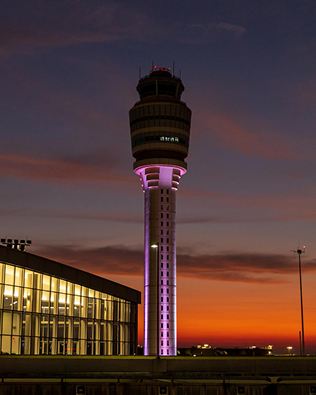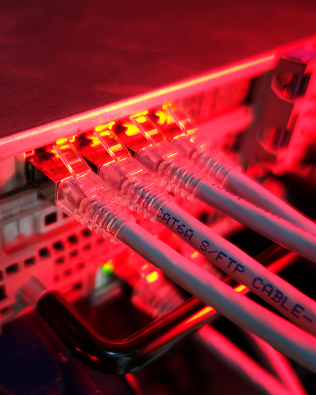XOP Networks’ Ringdown Firebar Conference Server, a Crash Phone System, scales from 8 ports to 96 ports. It provides direct termination for analog (Red) phones and IP-based SIP phones. These crash phone systems are typically deployed in campus locations prone to emergency situations, e.g., airports, air force bases, chemical plants, oil and gas installations, etc. A person close to the emergency can simply lift the handset on any (or designated) RFCS-connected phone and trigger a dial-out to the other phones. As first responders answer these calls, they are automatically placed into a conference with the initiator. A unique aspect of XOP Networks’ RFCS is its ability to also interface with on-site PBX or IP PBX. This allows people outside the immediate emergency area to be reached via the PSTN. The XOP Networks RFCS systems can be deployed in high-availability (99.999%) configuration.
Allows multiple phones and push buttons to initiate emergency calls.
Allows easy growth and system reconfiguration, ensuring quick adaptation to evolving needs.
Seamlessly integrates with analog, digital, and radio networks.
Supports strobe lights, sirens, speaker horns, and garage gate-opening devices.
Monitors every call, trigger, and connection live — no blind spots during emergencies.
Stays operational even while upgrading to next-gen emergency communication.
RFCS allows seamless integration and connects effortlessly with your existing communication infrastructure, bringing together multiple stakeholders, agencies, and departments under one system. It supports a hybrid setup where analog and digital devices can be part of the same system.
It is scalable from 8 to 96 ports, allowing that many analog/digital devices to be connected and configured in the system. It is suitable for small setups as well as large organizations/operations and may be deployed on a physical server or virtual cloud server. It supports multiple types of communication channels and various types of devices.
The solution is built around Industrial Grade Server with hot swappable hard drives and is suitable for outside plant deployment. It is also available in dual server, redundant and hot stand-by configuration that results in near zero downtime.
It allows multiple phones and push buttons to be designated as trigger points. Each trigger can have its own set of defined endpoints that get activated when the trigger is initiated. This helps in defining different sets of response teams for different types of emergencies if the trigger points are appropriately set up.
Allows multiple types of devices to be connected as end-points. These include analog and digital phones, strobe lights, speakers, PA systems, garage door opening devices, digital display units (signages).
It can directly connect to Analog (RED emergency) Phones and supports long loop lengths (30,000 feet). It supports PSTN connectivity (T1/E1/CAS interface) for legacy networks and Ethernet/fiber-optic-based LAN connectivity for SIP/VoIP interfaces. It can be interfaced with Radio Networks. It also supports connectivity to legacy and cloud PBXs.
Built for critical environments, RFCS ensures encrypted, tamper-proof communication across all channels. It maintains data integrity and prepares your systems for a secure, digital-first future where every transmission counts.
The system has a user-friendly, web-based administrator portal for configuring trigger points, conferences, alerts, and scheduling periodic testing of the Crash Phone system. It allows real-time monitoring of conferences and has an automated recording feature that enables easy review of past events.
It supports a phased approach to migration from legacy systems to modern, digital communication systems, allowing incremental changes that ensure almost zero downtime during the transition. It is a suitable replacement for Tellabs 291/292 or other similar Firebar equipment.
Learn how RFCS compares to other legacy systems


No Presentations found in this category







